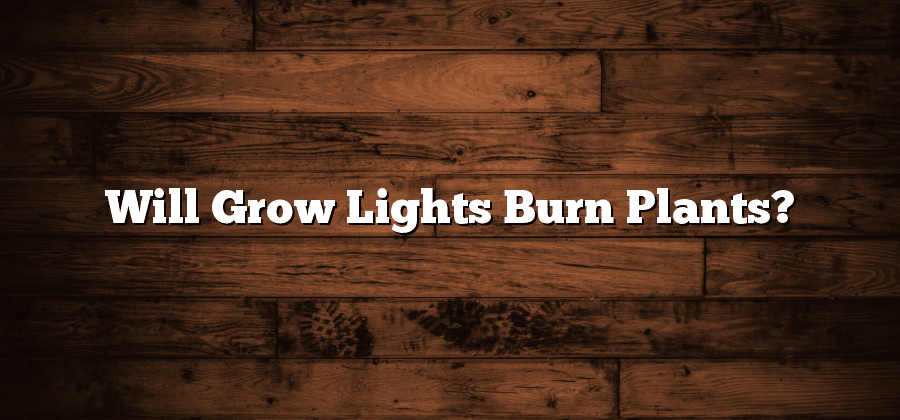Understanding the Effects of Grow Lights on Plants
One of the most vital factors for successful plant growth is lighting. With the advancement in technology, grow lights have become an indispensable tool for indoor gardening. These artificial lights emit a specific spectrum of light, allowing plants to undergo photosynthesis and thrive even without natural sunlight. Understanding the effects of grow lights on plants is crucial for every gardener or plant enthusiast who wants to maximize their plant growth potential.
Grow lights have the ability to provide plants with the necessary light energy for photosynthesis, which is essential for their survival and growth. The type of light emitted by grow lights, as well as the intensity and duration of exposure, can significantly impact plant health. Different plants have varying light requirements, and it is important to select the appropriate type of grow light to meet these needs. Additionally, the distance between the grow lights and plants, as well as the duration of lighting, need to be carefully considered to prevent potential harm or damage to the plants.
Factors to Consider When Using Grow Lights for Plant Growth
When using grow lights for plant growth, there are several key factors that need to be considered. First and foremost, it is crucial to understand the light requirements of the specific plants you are growing. Different plants have different needs when it comes to light intensity and duration. Some plants thrive under bright, direct light, while others prefer a more indirect and gentle glow. By understanding the light requirements of your plants, you can ensure that they are receiving the optimal amount of light for healthy growth.
Another important factor to consider is the type of grow light you are using. There are various options available, including fluorescent, LED, and high-intensity discharge (HID) lights. Each type has its own advantages and disadvantages, so it is important to choose the one that best suits your needs and the needs of your plants. Factors such as energy efficiency, lifespan, and light spectrum should all be taken into account when selecting the right grow light. Additionally, it is important to position the lights properly to ensure even light distribution and to minimize the risk of plant burn. By carefully considering these factors, you can create an ideal lighting environment for your plants and promote healthy growth.
The Importance of Proper Light Intensity for Healthy Plant Growth
Proper light intensity plays a crucial role in ensuring healthy plant growth. It is essential for plants to receive the right amount of light in order to carry out essential biological processes such as photosynthesis. Insufficient light intensity can lead to stunted growth and weakened plants, while excessive light intensity can result in damage to the leaves and even plant burn.
When determining the appropriate light intensity for plants, it is important to consider the specific needs of each plant species. Some plants thrive in high light conditions, while others are more suited to lower light intensities. Factors such as the plant’s natural habitat and its stage of growth should be taken into account to ensure optimal light exposure. Monitoring light levels regularly and adjusting the distance between the plants and the grow lights can help maintain the appropriate light intensity for healthy plant growth.
How Different Types of Grow Lights Affect Plant Health
There are various types of grow lights available in the market that can have different effects on the health and growth of plants. While each type of grow light provides the necessary light energy for photosynthesis, the specific characteristics of the light can influence plant health in different ways.
One type of grow light commonly used is fluorescent lights. These lights emit a cool light spectrum, which helps in promoting vegetative growth in plants. Fluorescent lights are especially useful for starting seedlings and growing leafy greens. However, they can be less effective for flowering and fruiting plants, as they may not provide the necessary light intensity and spectrum required for optimal flower and fruit development. Therefore, it is important to consider the specific needs of plants before choosing fluorescent lights as the primary source of light.
Common Misconceptions about Grow Lights and Plant Burn
One common misconception held by many plant enthusiasts is the belief that grow lights can directly cause plant burn. While it is true that excessive exposure to intense light can have negative effects on plants, it is not the grow lights themselves that are to blame. Rather, it is the improper use and positioning of the lights that can lead to issues such as leaf burn or stunted growth. It is important to understand that different types of plants have varying light intensity requirements, and therefore it is crucial to choose the right type of grow light and adjust its position accordingly.
Another misconception related to grow lights and plant burn is that the higher the wattage of the light, the better it is for plant growth. However, this is not always the case. While it is true that some plants may benefit from high-intensity lighting, others may be more sensitive and require lower intensity levels. It is necessary to consider factors such as the plant’s natural environment and its specific light requirements when selecting the appropriate wattage for a particular grow light. By properly understanding and addressing these misconceptions, growers can eliminate the risk of plant burn and maximize the benefits of using grow lights for healthy plant growth.






